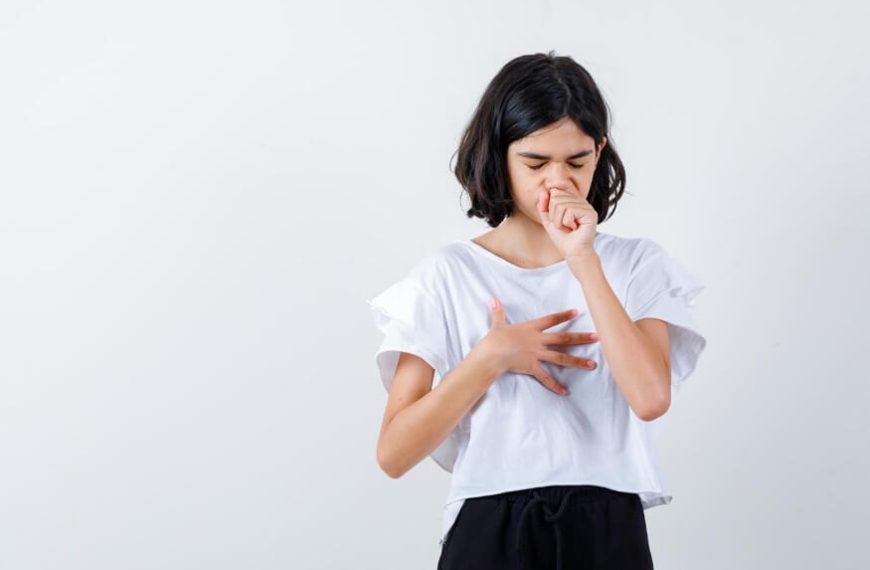Breathing infections and respiratory issues are significant concerns for parents, especially in a country like India where environmental factors often contribute to such health problems. In this blog, we’ll explore effective ways to protect children from these ailments and maintain their respiratory health. We’ll discuss how to breathe with a sinus infection, recognize a sinus infection breath, manage infection breathing difficulties, and understand respiratory infection causes.
Understanding Breathing Infections
Breathing infections include a variety of respiratory disorders, such as sinus infections, which cause facial pain and congestion, bronchitis, which causes a persistent cough and wheezing, and pneumonia, a more serious condition that causes a cough, fever, and difficulty breathing. Early detection of these symptoms is critical for rapid treatment, minimising infection progression and spread, assuring faster recovery, and avoiding significant sequelae. Treatments range from rest and drinks for mild cases to antibiotics for more serious bacterial infections, so consulting a healthcare professional for an accurate diagnosis and successful treatment plan is crucial.
Sinus Infection and Breathing
Sinus infections, particularly in children, can be challenging due to their less developed sinuses. Typical symptoms include:
Nasal Congestion: Causing difficulty in breathing through the nose. Facial Pain: Often around the eyes or forehead. Cough: Particularly worse at night or in the morning. Sinus Infection Breath: A distinct odour from the mouth due to the infection. Understanding these symptoms enables parents to seek timely medical advice.
How to Breathe with a Sinus Infection
Managing a sinus infection involves alleviating symptoms to ensure comfort and facilitate breathing:
- Steam Inhalation:
- Elevated Sleeping Position:
- Stay Hydrated:
The warm, moist air from steam helps in loosening mucus, providing relief from congestion.
Using extra pillows to elevate the head can prevent mucus accumulation in the sinuses, aiding in easier breathing at night.
Drinking plenty of fluids helps in thinning the mucus, facilitating its drainage and improving nasal congestion.
Infection Breathing Difficulties
Infections can lead to significant breathing difficulties in children. These may manifest as:
- Rapid Breathing:
- Wheezing:
- Shortness of Breath:
A noticeable increase in breathing rate.
A high-pitched sound while breathing, indicating obstruction or narrowing of airways.
Difficulty in catching breath, which may indicate a severe underlying condition.
Immediate medical attention is very important in such cases to prevent further complications.
Causes of Respiratory Infections
To keep our children healthy, it’s crucial to understand what leads to respiratory infections:
- Viruses and Bacteria:
- Pollution:
- Allergens:
These tiny culprits are everywhere. From the common cold (rhinovirus) to more serious threats like the flu virus and RSV, they spread fast, especially among kids. They hitch a ride on airborne droplets from a sneeze or a cough and can also linger on toys and doorknobs, waiting to be picked up by little hands.
Our kids’ lungs are at the mercy of the air around them. Smoke from cars and factories, chemicals released into the air, and even tiny particles known as particulate matter can harm their delicate respiratory systems. This pollution can make them more prone to infections and can worsen conditions like asthma.
Although common irritants like mould, dust mites, pollen, and pet hair may appear innocuous, they can cause allergic reactions in certain children. Breathing during these reactions can be challenging, particularly for children with asthma. They often mimic the symptoms of colds, including coughing, sneezing, and runny noses.
Techniques to Avoid Respiratory Infections
The following actions will help protect our children from respiratory infections:
- Good Hygiene:
- Eating Right:
- Staying Active:
- Avoiding Smoke and Pollution:
- Keeping Up with Vaccinations:
The time-tested recommendation to wash your hands frequently is revolutionary. It’s easy: encourage youngsters to wash their hands after playing outside, coughing, or sneezing. Also, remind them to cover their mouths with a tissue or their elbow when they cough or sneeze.
A diet that’s colourful with fruits and veggies, balanced with whole grains and proteins, does wonders for their immune system. Think of foods rich in vitamins C and D, zinc, and omega-3s as their tiny shields against infections.
Regular play and exercise aren’t just fun; they actually make our kids’ lungs stronger and more efficient. Whether it’s a game of tag, cycling, or swimming, it all counts towards building a healthier respiratory system.
Keeping our kids away from cigarette smoke and polluted environments is crucial. When the air quality dips, it might be better to play indoors.
Having up-to-date immunisations is like wearing an additional layer of defence. Vaccines such as the pneumococcal vaccination are important in preventing significant respiratory problems, so it’s not only about the flu injections.
When to Seek Medical Attention
Consult a healthcare professional if your child shows signs of: Persistent or worsening symptoms. Notable difficulty in breathing. Unusual lethargy or irritability. Prompt medical intervention can be critical in managing respiratory infections effectively.
Managing the Environment
Creating a healthy living environment is key in preventing respiratory issues:
- Air Purifiers:
- Humidifiers:
- Cleanliness:
These devices help in removing airborne allergens and pollutants, providing cleaner indoor air.
They reduce nasal and throat irritation by adding moisture to the air, which is especially helpful in arid areas.
Continual dusting and vacuuming of the house to get rid of any possible allergens or irritants.
By controlling the environment proactively, the risk of respiratory problems can be greatly decreased.
Tips for Parents During Seasonal Changes
- Navigating Seasonal Changes:
- Monitor Air Quality:
- Seasonal Clothing:
- Boost Immunity:
- Regular Doctor Visits:
- Educate Your Child:
Seasonal changes can significantly impact children’s respiratory health. Here are some tips for parents:
Be aware of air quality changes, especially during transitions between seasons, and limit outdoor activities when pollution levels are high.
Ensure your child is appropriately dressed for the changing weather to avoid catching colds.
Include seasonal fruits and vegetables in your child’s diet to boost their immunity.
Schedule check-ups during season changes to assess and manage any allergy or asthma triggers.
Teach children about the importance of covering their mouth while coughing and the proper way to wash hands, especially as seasons change.
These simple yet effective strategies can help safeguard your child’s respiratory health through seasonal transitions.
EuroKids, with its focus on holistic development and health, is an exemplary model in creating a safe and healthy learning environment for children. Their commitment to health and hygiene makes them a preferred choice for parents who prioritise their child’s well-being.
Remember, taking small steps today can lead to a healthier tomorrow for your child.















